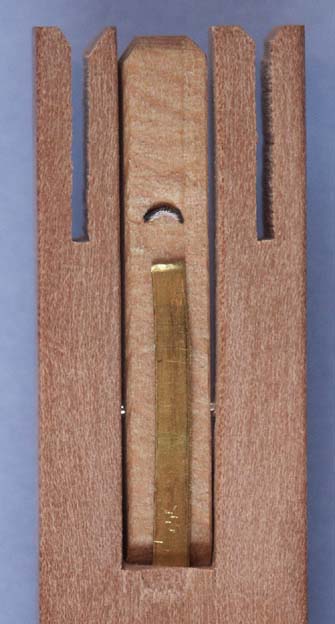The use of raven feathers for quills

In Italian jacks the spring which holds the tongue in position is almost always made of a piece of thin shim brass rather than pig's bristle. The shim spring is sharpened at one end and inserted into a pre-formed flat slot punched in the body of the jack at the base of the tongue slot. After it is placed temporarily in position a drop of hot water is applied to the base of the spring to expand the wood of the jack around the shim spring to hold it firmly in place.
The damper slots have sloped tops to facilitate the entry of the dampers when they are inserted. The damper slots reach to a level below the level of the quill. This is because the dampers are not cut with flat horizontal lower edges (as is common in many modern harpsichords), but are sloped so that they come into contact with the strings at an angle. This brings the vibration of the string to a stop gradually and silently rather than the abrupt damping of a flag damper with a flat bottom which can often produce a pronounced 'frump' sound as the string is brought to rest.
The arched shape of the quill slot with the black raven quill in place in it can be clearly seen. Arched quill slots like this are often found in jacks with original tongues which have not been changed in unenlightened modern restorations.
Go back to the main page of this section